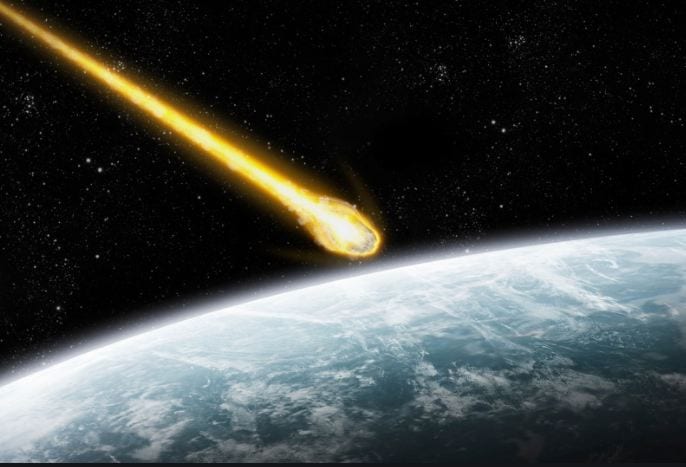A DAZZLING fireball has streaked across the sky of southern Spain.
The bolide, which was generated by a rock (a meteoroid) came from an asteroid that hit the atmosphere at about 55,000 km/h on the night of August 17 at 23.18 hours (equivalent to 21:18 universal time).
The bright fireball entered the atmosphere at 55,000 kilometres per hour and flew over the Mediterranean, over a point located between the coast of Malaga and the coast of Morocco, but could be seen from more than 600 kilometres away, with witnesses in the provinces of Malaga, Cadiz, Sevilla and Huelva, who reported the phenomenon on social networks and described the spectacular fireball to be ‘as bright as a full moon.’
The high-speed collision with the atmosphere caused the rock to become incandescent generating a white-hot meteorite that began at an altitude of some 83 kilometres over the Mediterranean between the coasts of Spain and Morocco.
From there it moved northeast, and ended at a height of around 23 km over the sea, at a point about 50 kilometres from the Spanish coast and 70 kilometres from the Moroccan coast.
The preliminary analysis of this phenomenon suggests that the rock was not fully destroyed: a part of the meteoroid survived and fell into the sea as a meteorite, however it cannot be recovered.
This bright meteor was recorded in the framework of the SMART project, operated by the Southwestern Europe Meteor Network (SWEMN) from the meteor-observing stations located at Huelva, La Hita, CAHA, OSN, La Sagra, Sevilla, and El Aljarafe.
The event has been analyzed by the principal investigator of the SMART project: Dr. Jose M. Madiedo, from the Institute of Astrophysics of Andalucia (IAA-CSIC).
The detectors of the SMART project operate within the scope of the Meteorological and Earth Observation Network of Southwest Europe (SWEMN), which aims to continuously monitor the sky, in order to record and study the impact on the terrestrial atmosphere of rocks from different objects in the Solar System.
READ MORE:
- WATCH: Impressive fireball streak across sky in Spain’s Andalucia
- Last supermoon of the year; best time to view it in Spain’s Malaga
Click here to read more News from The Olive Press.









